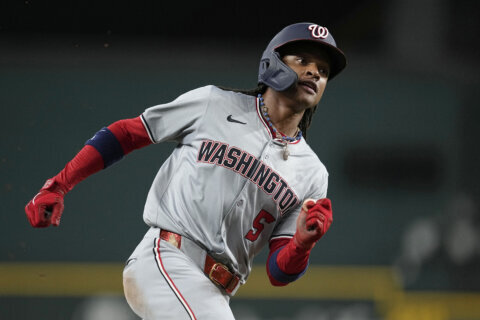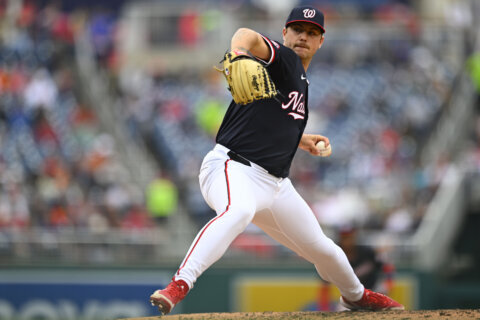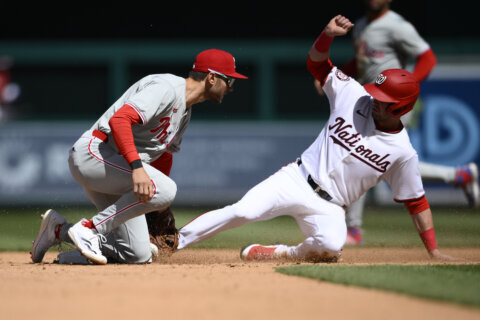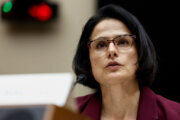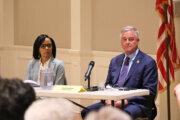WASHINGTON — In honor of Valentine’s Day, perhaps our single worst, most corporatized, overproduced and shame-inducing holiday, I have a proposal for the sports world in 2015: Kill the Kiss Cam. Kill it with fire.
When the promotion was introduced on the Dodger Stadium Jumbotron back in the 1980s, it was a novel idea: Show people in the crowd on the big board and fill 90 seconds between innings without having to shell out any money for a prize.
The entire purpose of the Kiss Cam is the same as any other downtime distraction — to keep the fans entertained until the action below resumes. While the merits of filling every second of breathable air with flashing lights, loud noises and promotions is a topic for another column, Kiss Cam stands above the rest in its insolence.
Just like Valentine’s Day itself, Kiss Cam creates public pressure to express forced affection for the person you happen to be with, no matter the actual context of your relationship. We’ve all seen awkward couples, either too new to their relationship or simply not inclined toward public displays of affection, shy away from the whole affair. For doing so, they incur the wrath of a crowd that demands to be entertained.
God forbid you simply don’t want to buy diamonds, or chocolates, or flowers, or kiss someone on the mouth in front of tens of thousands of strangers with whom all you share is an area code and a sporting rooting interest.
Sometimes the Kiss Cam operators pick particularly poorly, targeting couples not even in relationships. One Minnesota hockey fan came prepared for such a situation. Knowing it was Valentine’s Day, and wanting to avoid an awkward situation with his sister, he took precautionary measures, just in case.
Can you imagine if he hadn’t?
Eventually there came the wrinkles in Kiss Cam presentation. After all, repetition and variation is the simplest form of comedy. Soon, the final shot of the Kiss Cam would include two players from the opposite team, both male, thrust into the eye of everyone in the ballpark to be embarrassed publicly.
“See?” it suggested. “Those two men are being made to kiss. How embarrassing. Let’s laugh at them.”
The Wizards abolished the homophobic aspect of the Kiss Cam in home games at the Verizon Center in 2011. In 2012, then-Oakland A’s pitcher Brandon McCarthy took to Twitter to point out just how passe the practice was.
They put two guys on the 'Kiss Cam' tonight. What hilarity!! (by hilarity I mean offensive homophobia). Enough with this stupid trend.
— Brandon McCarthy (@BMcCarthy32) April 19, 2012
It was a rare instance of an athlete speaking out against an anti-gay practice in the sports world, where, after Jason Collins’ retirement and Michael Sam’s season spent bouncing between practice squads, we still do not have an openly gay player in major American professional sports. But there are certainly gay athletes. Wouldn’t it offend them?
“I think the other thing people tend to forget — they aren’t boyfriends; they’re not in any kind of relationships,” says Brent Minor, executive director of Team DC. “It’s just like some strange guy kissing some strange girl, which would also be inappropriate.”
But what of showing an actual homosexual couple kissing as part of the montage? As recently as 2009, the Washington Mystics managing partner Sheila Johnson admitted that they “just don’t find it appropriate.” Go back to 2000, and a lesbian couple not on camera was removed from Dodger Stadium, of all places, for sharing a kiss in the stands, due to a fellow fan complaining.
Flash forward to present day — McCarthy will pitch for Los Angeles this year. The Dodgers’ fiercest division rivals, the San Francisco Giants, were perhaps the first and only team to show a gay kiss on the Jumbotron, back in 2011. But that hasn’t exactly opened the door, or shut down the tradition of showing opposing players.
Plenty of teams have a Night OUT, like the Nationals do in conjunction with Team DC. At nearly 4,000 participants, it is the largest in the United States and has featured the Washington Gay Men’s Chorus singing the National Anthem. But that doesn’t extend to the Jumbotron, to a public endorsement of all people.
“I think it would give people a real glimpse of where we are as a society, where people can say, ‘What is the big deal about it?’” says Minor. “After all, these are fans and supporters of the local team.”
Is the Kiss Cam so exceedingly embarrassing as to cause irreparable emotional scarring on those exposed who do not want to be? Probably not, although it’s certainly ruined a few evenings. And even with the homophobic aspect removed, it’s nevertheless awkward and off-putting and shaming, in many of the same ways as Valentine’s Day itself.
Including homosexual couples on the screen is the obvious, egalitarian way to run the Kiss Cam in the year 2015. But the best answer for everyone involved is just to kill it altogether.

